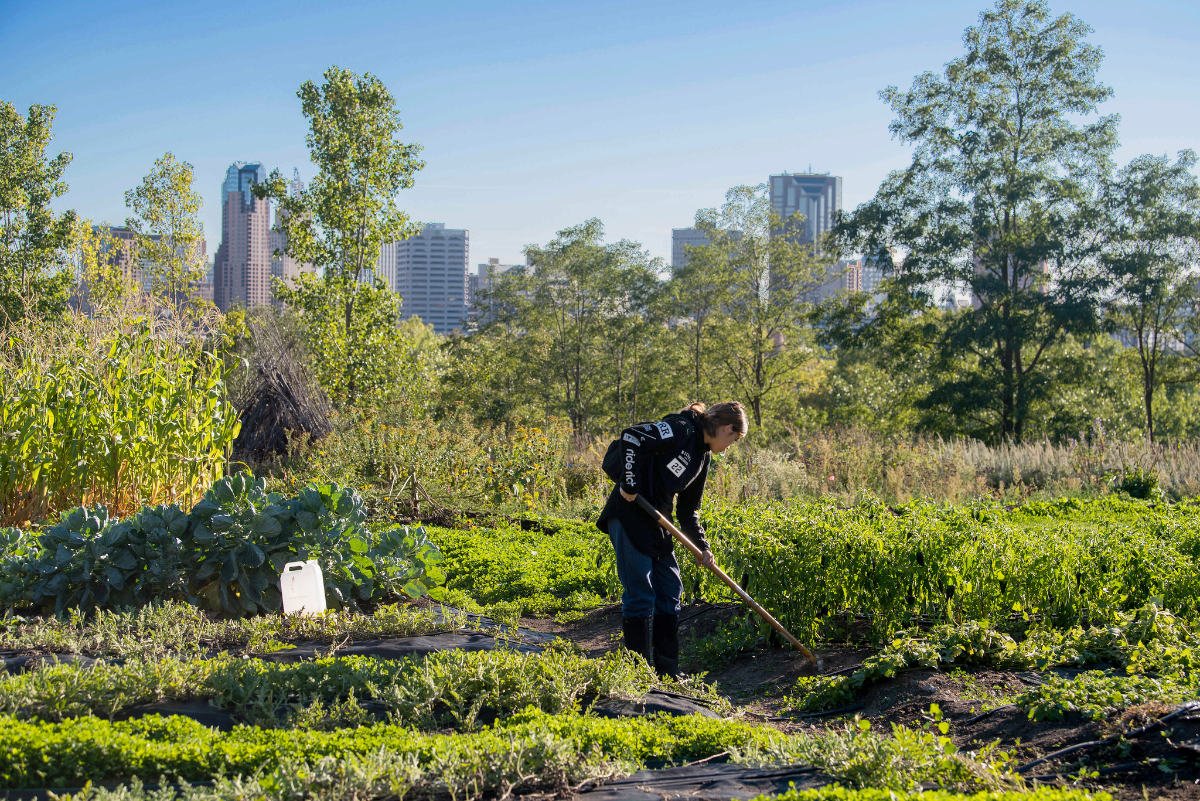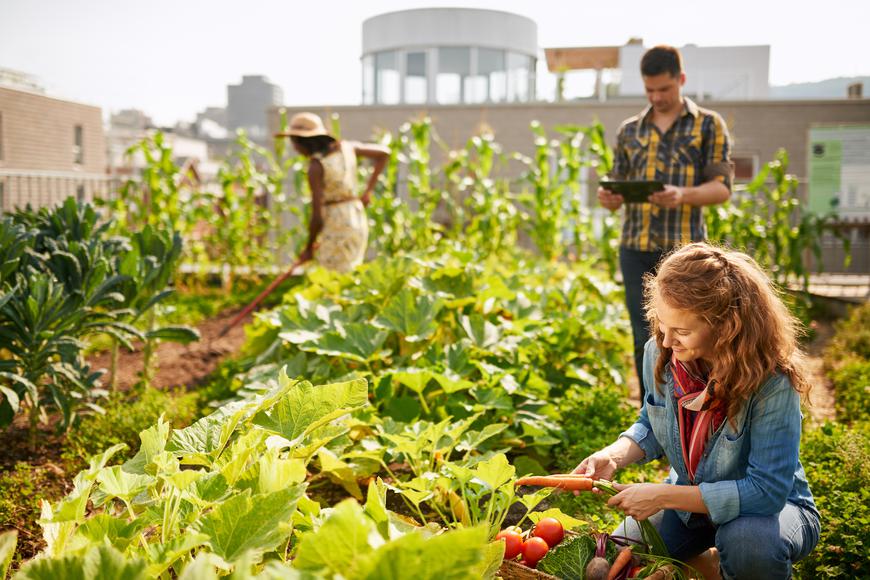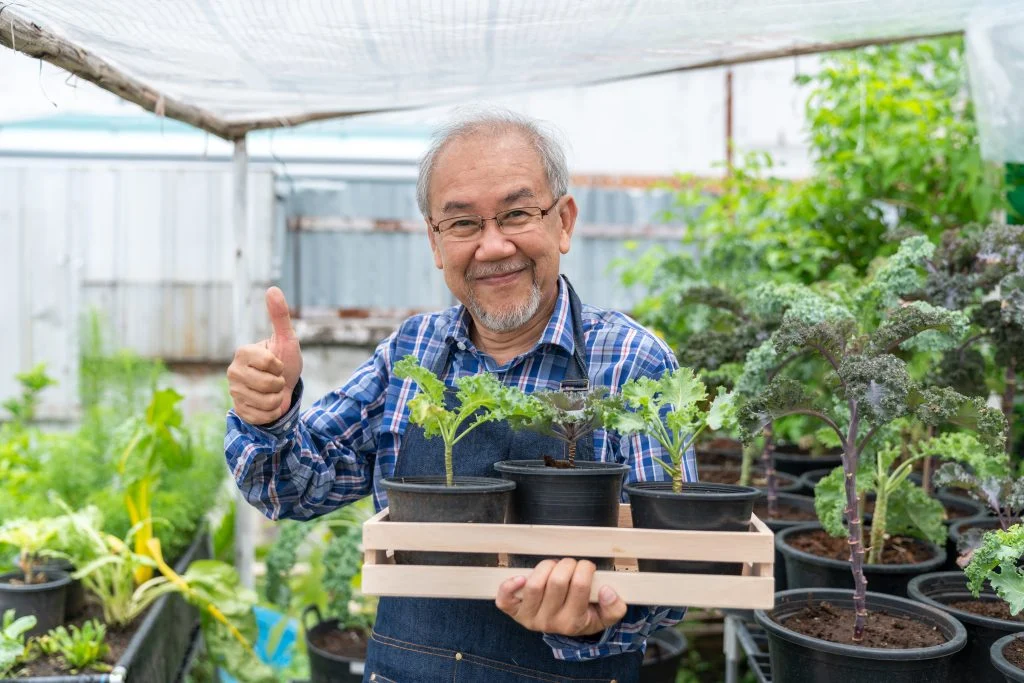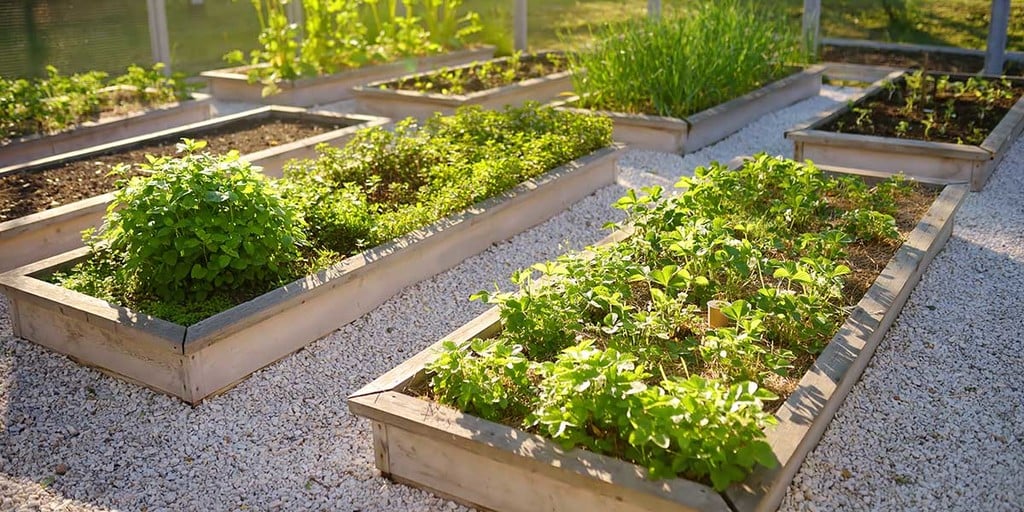Imagine standing on a bustling city rooftop, surrounded by skyscrapers, yet your hands are buried in rich soil, tending to rows of vibrant tomatoes and herbs. That’s the magic of urban farming – a blend of nature’s resilience and human ingenuity right in the heart of concrete jungles. I remember my own start: a tiny balcony in a noisy apartment block where I planted my first basil seeds, hoping they’d survive the urban chaos. Little did I know, that small act would spark a passion for growing food amid the city buzz, connecting me to something timeless and grounding.
What is Urban Farming?
Urban farming is essentially the art of growing food in city environments, turning overlooked spaces like rooftops, backyards, or vacant lots into productive patches. It’s not just about planting veggies; it’s a clever response to modern challenges like food scarcity and environmental strain. From ancient Mesopotamian plots to today’s high-tech setups, this practice weaves agriculture into urban life, making fresh produce accessible where it’s needed most.
Defining Urban Agriculture
At its core, urban agriculture involves cultivating, processing, and distributing food within city limits or nearby suburbs. This can range from simple home gardens to sophisticated indoor systems using no soil at all. It’s about rethinking space – why let a rooftop idle when it could yield salads?
The Evolution and History of Urban Farming
Urban farming isn’t a new fad; it traces back to 3,500 BC in Mesopotamia, where city dwellers carved out plots amid growing settlements. Fast-forward to World War II victory gardens that boosted morale and food supplies in cities worldwide. Today, it’s resurging amid climate concerns, much like my balcony experiment that echoed those historical efforts to reclaim green space in gray landscapes.
Types of Urban Farming
Urban farming comes in various flavors, each suited to different spaces and goals. Whether you’re stacking plants vertically or sharing a community plot, these methods adapt agriculture to city constraints. It’s like choosing the right tool for a job – pick what fits your urban nook.
Community Gardens
These shared spaces on public land let neighbors team up to grow flowers, veggies, or herbs, often run by volunteers. They foster bonds while beautifying neglected areas. Picture a vacant lot transformed into a lively hub of green thumbs.
Rooftop Gardens
Perched atop buildings, these gardens use otherwise wasted space for crops, improving air quality and insulation. They’re ideal for sun-loving plants like tomatoes. I once helped a friend set one up – the view was as rewarding as the harvest.
Vertical Farming
This innovative approach stacks crops in layers indoors, using LED lights and controlled environments for year-round growth. It’s space-efficient for cities with limited ground. No soil needed; hydroponics does the trick, turning warehouses into farms.
Hydroponics and Aquaponics
Hydroponics grows plants in nutrient-rich water, while aquaponics adds fish for a symbiotic system. Both suit indoor urban setups. They’re water-savvy, recycling resources in tight spots like apartments.
Backyard and Balcony Farming
Even small personal spaces can yield big results with containers or raised beds. Perfect for beginners, it’s where many start their journey. My balcony basil thrived here, proving tiny areas pack potential.
| Type of Urban Farming | Space Required | Best For | Examples of Crops |
|---|---|---|---|
| Community Gardens | Medium (shared lots) | Social bonding, education | Vegetables, herbs, flowers |
| Rooftop Gardens | Rooftop access | Insulation, air quality | Tomatoes, peppers, basil |
| Vertical Farming | Indoor vertical space | Year-round production | Lettuces, strawberries, microgreens |
| Hydroponics/Aquaponics | Indoor setups | Water efficiency | Fish, greens, herbs |
| Backyard/Balcony | Small personal areas | Beginners, home use | Container veggies like carrots, radishes |
Benefits of Urban Farming
Urban farming packs a punch beyond fresh eats – it boosts health, saves money, and greens up cities. It’s a win for wallets and well-being alike. Who knew dirt under your nails could lead to such rewards?
Environmental Advantages
By reducing food miles, urban farms cut carbon emissions from transport. They also enhance biodiversity, absorbing CO2 and cooling urban heat islands. It’s nature’s way of fighting back against concrete sprawl.
Economic Perks
Local production means lower grocery bills and job creation in communities. Selling at farmers’ markets adds income streams. My small plot once supplied neighbors, turning hobby into side hustle.
Social and Health Benefits
Gardening builds community ties and promotes physical activity, easing stress. Fresh produce encourages healthier diets, combating food deserts. There’s joy in sharing a homegrown salad with friends – pure connection.
- Pros of Urban Farming:
- Increases access to nutritious, local food.
- Reduces environmental footprint through less transport.
- Strengthens community bonds and mental health.
- Creates economic opportunities in urban areas.
- Cons of Urban Farming:
- Limited space can restrict crop variety.
- Potential soil contamination in cities.
- High initial setup costs for tech like hydroponics.
- Zoning laws may hinder expansion.
Challenges in Urban Farming
Despite its appeal, urban farming faces hurdles like polluted soil or scarce water. These obstacles test creativity, but solutions exist. It’s like navigating city traffic – plan ahead to thrive.
Soil and Contamination Issues
Urban soils often carry heavy metals from past industries. Testing and raised beds help mitigate risks. I learned this the hard way when my first soil test revealed surprises.
Space and Zoning Constraints
Cities prioritize buildings over farms, leading to permit battles. Vertical methods bypass this, but advocacy is key. Persistence pays off in securing spots.
Water and Resource Management
Access to water can be tricky in dense areas. Rain harvesting or efficient irrigation saves the day. Efficiency turns scarcity into sustainability.
How to Start Urban Farming
Ready to dig in? Starting small builds confidence. Assess your space, gather basics, and grow from there. It’s a journey, not a sprint – my balcony basil didn’t happen overnight.
Assessing Your Space and Resources
Evaluate sunlight, soil, and water availability. Balconies get morning light? Perfect for herbs. Start with what you have to minimize costs.
Choosing the Right Crops
Opt for quick-growers like lettuce or radishes for beginners. Match plants to your climate and space. Experimentation reveals winners.
Essential Tools and Equipment
Begin with hand trowels, watering cans, and soil testers. For advanced setups, consider hydroponic kits. Quality tools last, making farming fun.
- Best Tools for Urban Farming:
- Hand trowel for planting.
- Pruning shears for maintenance.
- Soil pH tester to check quality.
- Drip irrigation system for efficiency.
- Compost bin for waste recycling.
Where to get started? Check local community centers or online resources like USDA’s urban agriculture guides for seeds and advice. For tools, sites like Gardener’s Supply offer urban-specific gear.
Step-by-Step Guide to Your First Urban Farm
- Research local zoning laws.
- Test soil or use containers.
- Plant easy crops.
- Water consistently.
- Harvest and enjoy!
Real-World Examples of Urban Farming
From Detroit’s revitalized lots to Singapore’s high-rises, urban farms inspire globally. These stories show transformation in action. They remind me of my modest start, scaled up.
Detroit’s Urban Farming Revival
In Detroit, initiatives like Food Field turn blighted areas into aquaponic farms, providing jobs and food. It’s rebirth through roots.
Singapore’s Vertical Farms
Sky Greens stacks veggies in towers, feeding a dense population sustainably. Tech meets tradition here.
Brooklyn Grange in New York
This rooftop farm spans acres, supplying markets while educating locals. Urban oasis at its best.
People Also Ask
Urban farming sparks curiosity – here are real questions from searches, answered briefly.
What Are Examples of Urban Farming?
Examples include community gardens, rooftop setups, and hydroponic systems in warehouses.
What Are the Benefits of Urban Farming?
It provides fresh food, reduces emissions, and builds community health.
What Are the Challenges of Urban Agriculture?
Soil pollution, limited space, and regulations top the list.
Is Urban Farming Profitable?
Yes, through markets or CSAs, but scale matters.
FAQ
How Much Space Do I Need to Start Urban Farming?
You can begin with as little as a windowsill for herbs or a balcony for containers. No vast fields required – adaptability is key.
What Crops Grow Best in Urban Settings?
Leafy greens, herbs, and tomatoes thrive in small spaces with good sun. They’re forgiving for newbies.
Are There Grants for Urban Farming?
Yes, check USDA programs or local nonprofits for funding to kickstart your project.
How Does Urban Farming Help the Environment?
It cuts transport emissions, sequesters carbon, and boosts biodiversity in cities.
Can Urban Farming Be Done Indoors?
Absolutely – hydroponics and grow lights make it possible year-round.
Urban Farming vs. Traditional Farming: A Comparison
Urban farming flips the script on traditional methods, focusing on efficiency over expanse. Both feed us, but their approaches differ wildly.
| Aspect | Urban Farming | Traditional Farming |
|---|---|---|
| Location | Cities, indoors/outdoors | Rural fields |
| Scale | Small, intensive | Large, expansive |
| Methods | Vertical, hydroponics | Soil-based, machinery |
| Benefits | Local access, low transport | High volume, economies of scale |
| Challenges | Space limits, pollution | Weather dependency, land use |
In wrapping up, urban farming isn’t just growing food – it’s cultivating hope in crowded places. My balcony venture taught me resilience, much like cities worldwide adapting to feed their people. Dive in; the rewards are fresh and fulfilling. For more, explore USDA’s resources or local co-ops.



